The relationship between Manchester the city, and Lancaster the bomber is well documented. Many of us will also know that the Lancaster bomber originally started out as the Manchester bomber and that Avro, the aviation manufacturing company responsible for the Manchester and Lancaster bombers started in, and fortuitously remained Manchester based for the entire life of the company. (see my blog https://pleszak.blog/2019/03/16/manchesters-avro-aviation-heritage-reminders/ for more information).

I’m an aviation enthusiast, but I naively thought that there were only three versions of the Lancaster. It wasn’t the case, and not only that, more significantly, the Lancaster was also part of an historic piston-engined bomber heritage. So, I have pulled together a table outlining the various Lancaster versions together with all the Avro heavy piston aeroplanes of the Lancaster military family tree.
I’m currently working on a blog outlining a brief history of Avro and its sites around the city of Manchester (see https://pleszak.blog/2019/03/16/manchesters-avro-aviation-heritage-reminders/), but basically, the Avro company was started by Manchester born aviation pioneer Alliott Verdon Roe, who in 1910 supported by his brother Humphrey, established the Avro aeroplane company in Ancoats. It remained Manchester (or at least, Greater Manchester) based through various amalgamations until British Aerospace, the current company that incorporates the Avro brand, closed its Woodford and Chadderton factories in 2012.
Avro 533 Manchester
The first Avro aeroplane to bear the name Manchester was the Avro 533, a twin-engined late WW1 bomber/reconnaissance design of which three examples were built, but due to engine issues it didn’t actually go into production. It wasn’t even built or flown in Manchester but at Avro’s Hamble site near to Southampton.

Avro 679 Manchester
The start of the Lancaster lineage wasn’t until 1936 when Avro responded to an Air Ministry requirement for a modern twin-engined medium bomber.
The design requirements were demanding in terms of operational capabilities, speed, and bomb load, and with the additional unusual requirement that it should be capable of being launched using a catapult. The Avro team led by the aviation legend that was Roy Chadwick came up with an innovative design, the Avro 679 which was given the name Manchester. The catapult requirement, though tested was never used but introduced a strong floor which enabled a huge bomb carrying capacity.

Designed for ease of production and repair, it looked almost identical to its famous and much-loved successor the Lancaster, but with only two engines. These were the powerful Rolls-Royce Vulture 24-cylinder engines. In reality, each were two Rolls-Royce 12-cylinder (V12) Peregrine engines bolted together in an X24 configuration with a single crankcase. They are instantly recognisable in pictures by the four exhaust outlets, two on either side on the side of the engines, but in an uncanny parallel to its earlier namesake, they were to be the downfall of the Manchester.
The prototype Manchester with a twin tail configuration was constructed in sections at Avro’s Newton Heath factory. At that time Woodford was having concrete runways installed, so it was transported to, and assembled at, Avro’s Experimental Flight Facility at Ringway Airport (now Manchester International Airport). Its maiden flight was in July 1939.
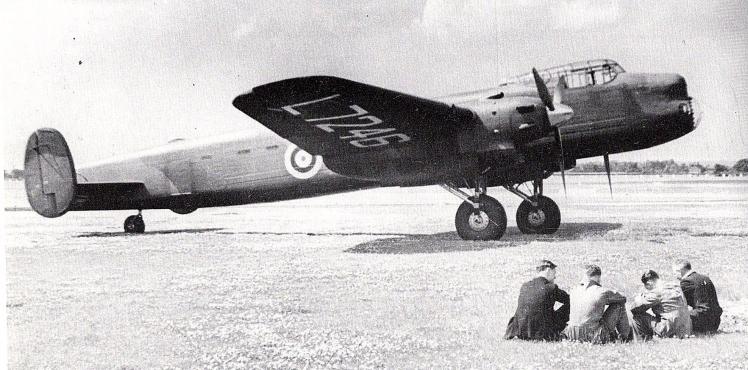
Flight testing was positive, and as with all Avro products production was undertaken at an Avro construction factory and then transported to Avro’s airfield at Woodford in Cheshire for assembly and test flying. Lack of directional stability required the addition of a central tail fin, and the Manchester entered operational squadron service in November 1940. The initial twenty aeroplanes, designated the Mk.I, had the triple fin configuration, but this was modified in the Mk.IA with a larger twin fin and the central fin removed.

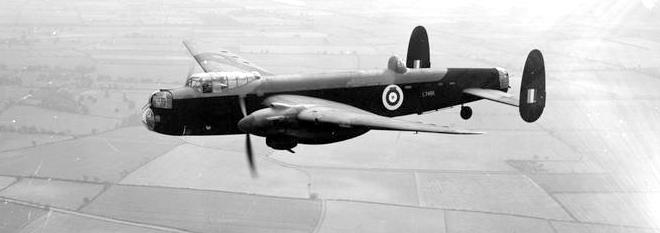
As good an aeroplane as it might have been, it was seriously marred by the unreliability of its Vulture engines. So-much-so that by early 1941 most Manchesters were grounded and Rolls-Royce cancelled any further development of its Vulture engine. Various Avro modifications had resulted in the Manchester Mk.III which was basically the same fuselage with an increased wing span but, significantly, with the two Rolls-Royce Vulture engines being replaced by four, less powerful but more reliable Rolls-Royce Merlin engines. (See my blog on Merlins: https://pleszak.blog/2019/01/20/rolls-royce-derby-birthplace-of-the-merlin/).

Although Production Manchester 1As had twin fins, The Manchester Mk.III prototype which was constructed at Avro’s new Chadderton plant incorporated a triple fin configuration. It made its maiden flight in January 1941 also from Ringway Airport which continued to be used for Avro’s test flights until the end of the war. It was less than two years after the first flight of the original Manchester. It was an instant success, apparently a delight to fly. Amidst political machinations, the type was approved, and it was given a new project number: The Avro 683. The Lancaster was born. Because it used many of the Manchester components the large outstanding order for Manchesters was converted into an order for Lancasters with those Manchesters under construction retrospectively completed as Lancasters.
Avro 683 Lancaster
The Lancaster and Merlin a heavenly union made in Manchester.
Lancaster performance was a massive improvement over the Manchester, and it had been achieved with minimum re-design. Construction was in five major sections, each completed in isolation of the other sections, which enabled a rapid manufacture and repair time. The sections were (in the case of Avro and Metropolitan-Vickers) manufactured at factories in Manchester with the sections transported by road for assembly and test flying at Woodford Aerodrome.

The initial production Lancaster had the twin fins and rudders enlarged and the central fin removed. It was designated the Lancaster B.I and was fitted with four V12 inline Rolls-Royce Merlin XX engines. The Lancaster entered operational service with the RAF in April 1942. Later production Lancaster B.Is had Merlin 22 or 24 engines.

As there was a high demand for Merlin engines for Spitfires and Hurricanes, and in case there was a disruption to Merlin supply, the Lancaster B.II was developed which had four Bristol Hercules radial engines. Identical in looks, apart from the engines, its performance wasn’t quite as good as the B.I. Three hundred were manufactured by the Armstrong Whitworth company.

For similar reasons of potential Rolls-Royce Merlin supply issues, the Lancaster B.III was fitted with American manufactured Packard Merlin (type 28, 38, or 224) engines. Externally it was indistinguishable from the B.I, internally, there was only the addition of slow-running cut-off switches as different carburettors were used.
The three versions were produced concurrently and due to the massive supply requirements for the aeroplane, the Lancaster Production Group was created to distribute and manage the construction of Lancasters at aeroplane manufacturing companies around England (See the table below).

I knew that there were various modifications to the Lancaster, but I ignorantly thought these to be simply conversions of the three main versions. I was wrong.
The B.I was indeed modified a couple of times. The B.I (Special) was developed to carry the huge Tallboy and Grandslam ‘earthquake’ bombs. Thirty-two aircraft were modified with a faired-over bomb-bay, uprated engines, reduced armaments, and structural improvements.

The B.I FE were late production aircraft, tropicalised and intended for use in the Far East against Japan. They had modified internal equipment and an additional fuel tank installed in the bomb bay. Most were painted white on the upper surfaces to help reduce the internal aircraft temperature in tropical conditions.
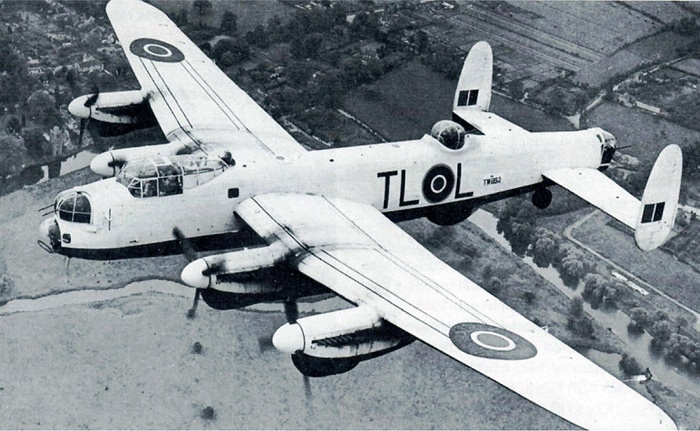
The PR.I was a post-war Photo-Reconnaissance modification that had all the gun turrets removed, a modified nose section, and cameras (dependent on the mission), installed in the bomb-bay.

Nearly sixty Lancasters B.Is were supplied to the French Aéronavale. Twenty-two were the later uprated B.I and designated the Lancaster B.VII. The main difference was the changed dorsal (mid-upper) gun turret. However, some of these had their gun turrets removed and were known as the B.I (Modified).
The B.III was also modified. The B.III (Special) sometimes referred to as the Type 464 Provisioning to denote that they had been provisioned for the specific task of carrying the Vickers Type 464 ‘Upkeep’ Mine (better known as Barnes Wallis’s bouncing bomb). is perhaps the most famous of all the Lancaster variants. Twenty-three were converted at Woodford. Amongst many modifications the bomb-bay doors were removed, the dorsal turret removed, and a special device fitted to spin the special Upkeep bomb (actually it was a mine). It was of course the Dambuster Lancaster. (See my blog https://pleszak.blog/2018/06/13/testing-and-training-for-the-dambuster-raids-whats-left-to-see/).
All Dambuster Lancasters were scrapped by 1947: to see the fate of the twenty-three that were created see my blog https://pleszak.blog/2019/08/20/what-happened-to-the-lancasters-used-on-the-dambuster-raid/

Developed from the B.III the ASR.III / ASR.3 had Packard Merlin 224 Engines, some armaments removed, observation windows fitted in the rear fuselage, and the bomb-bay adapted to carry a life boat for Air-Sea Rescue duties.

Following WW2, wartime designation was changed from Italic numerals (e.g. ASR.III / B.X) to peace-time Arabic version numbering (e.g. ASR.3 / Mk.10).
When American supplied RAF Coastal Command Liberators returned to America at the end of the war-time lend-lease programme several Lancaster B.III’s were converted to GR.3 (General Reconnaissance) or MR.3 (Maritime Reconnaissance). These were the last Lancaster’s in RAF operational service. The last ever RAF Lancaster retired in October 1956. It was given a ceremonious send-off and flew to be the breakers to be unceremoniously scrapped. (see https://www.youtube.com/watch?v=KeyziPVcpjg).

Given the success of the Lancaster a series of ‘super’ Lancasters were planned. These had a lengthened fuselage, increased wingspan, redesigned nose, and updated armaments. The first, originally known as the Lancaster B.IV was soon given the new Avro project reference of 694 and renamed the Lincoln.
The second version of the super Lancasters was the B.V, it also had a lengthened fuselage, increased wingspan, redesigned nose, updated armaments, but with more powerful engines. This was renamed the Lincoln B.II.
Nine Lancaster B.IIIs were fitted with more powerful engines (two Merlin 85s inboard and two Merlin 87s outboard), giving them better high altitude performance and a faster flying speed. These were designated the Lancaster B.VI. Unfortunately, the engines proved troublesome and difficult to maintain so they were withdrawn from operational use by 1944 and only used as test-bed aeroplanes.

The Lancaster B.VII was the final production version. These were essentially Austin Aero built B.Is with the dorsal turret uprated from a Frazer-Nash to a Martin gun turret positioned slightly further forward on the fuselage, and with all armaments uprated. However, the first fifty that were produced had the original Frazer-Nash turret and were designated B.VII (Interim).

Like the B.I (FE) some of the B.VIIs were also tropicalised for use in the far east and these were designated the B.VII (FE).
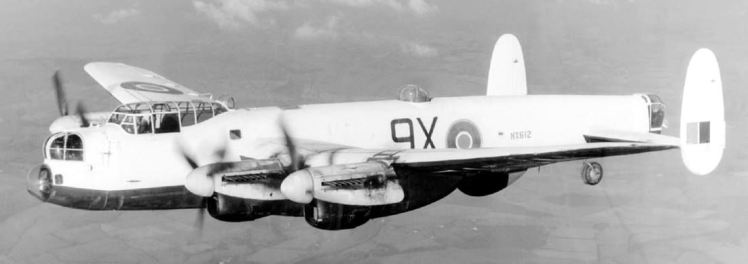
In addition to the B.I (Modified) the French Aéronavale also received true Lancaster B.VIIs without the dorsal turret which were designated B.VII (Western Union).

Two version numbers were allocated but unused for British Lancaster developments. These were the B.VIII reserved for Avro developments of the Lancaster and B.IX reserved for any other British development of the Lancaster.
The Lancaster B.X (after WW2 known as Mk.10) was essentially the Canadian built version of the Lancaster B.III but with American instruments and electronics. Construction was in Toronto by Victory Aircraft Ltd. which eventually became Avro Canada.

Post war Canadian Lancaster Mk.10s were also extensively modified as below:

Though Lancasters of various versions, were used after WW2 by many air forces around the world, Canadian built Mk.10s were the last operational Lancasters, the very last flight was 4 July 1964.
Avro 694 Lincoln
As discussed earlier, work on a bigger, better re-designed Lancaster began in 1943. It included a new wing with an increased wing span and a lengthened fuselage. Still powered by Rolls-Royce Merlin engines the new aeroplane could fly faster, higher and further than the Lancasters in service.
As with its predecessors the Lancaster and Manchester, the Lincoln (in reality the Lancaster B.IV, as it wasn’t officially named the Lincoln at the time) made it maiden flight at Ringway on 9 June 1944.

An order for more than two thousand Lincolns was placed, with production being distributed, like with the Lancasters, to several sub-contractors. But with end of the war in Europe and then in Asia only just over six hundred aircraft were produced at Avro factories in Manchester and Leeds, Metropolitan-Vickers in Manchester, and Armstrong-Whitworth in Coventry.
The main versions were the Lincoln Mk.I with Rolls-Royce Merlin engines and the Mk.II with American Packard Merlin engines. These were indistinguishable in looks and performance, and some Mk.II’s were re-fitted with Rolls-Royce Merlins and were known as the Lincoln Mk.IV. The Lincoln Mk.III was developed for Maritime Search and Rescue duties as the ASR 3 but was re-designated the Avro 696 Shackleton. Two Lincoln IIs were also converted as drone aeroplanes and known as the U5.
Too late for operational use in the Second World War Lincolns were used in anger, they saw action in Aden, Malaysia, and most notably in Kenya where they were used against Mau Mau tribesmen. The only ever combat loss of a Lincoln was over East Germany in 1953 when exercising the RAF’s right to fly along the air corridor from Hamburg to Berlin. One was shot down by a Russian MiG-15 with all seven crew members losing their lives. It is the only ever acknowledged loss of an RAF aeroplane to a Soviet fighter.
As with Lancaster construction, Lincoln production was also to be undertaken in Canada, but only one example, the Lincoln Mk.15 (B.XV), was built by Victory Aircraft Ltd.

But seventy-three were constructed in Melbourne by the Australian Government Aircraft Factory for use by the Royal Australian Air Force as below.


The last Lincolns were withdrawn from RAF service in 1963, it was to be the last true pistoned-engined bomber in service with the Royal Air Force, though Lincolns sold to the Argentinian Air Force were used until 1967.
RAF Lincolns were superseded in the bomber role by newer technology jet bombers, starting with the Canberra, and then followed by the ‘V’ bombers including Avro’s very own Vulcan. But the biggest contribution the Lincoln had to the RAF was to provide a design basis for the much more successful Avro Shackleton series of maritime patrol and airborne early warning aeroplanes as below.
Avro 696 Shackleton
The Avro 696 Shackleton though not strictly a bomber, was in fact used in 1964 to drop bombs against rebel forces in Yemen, and as the Shackleton heritage can be traced right back to the ill-fated Avro Manchester, it is absolutely necessary that it is included in this Lancaster lineage review.
It was developed from the Lincoln ASR 3 with a wider section fuselage and contra-rotating propellors specifically in response to the growing threat of the Soviet Navy around UK waters. As Avro’s Ringway flight test facility had moved back to Woodford following WW2 the first test flight, unlike that of its predecessors, was from the Avro airfield at Woodford on 9 March 1949.

With two Rolls-Royce Griffon 57As inboard and two Griffon 57s outboard and a blister radome under its chin it was initially designated the GR.1 for General Reconnaissance but was later re-designated the MR 1 to reflect its Maritime Reconnaissance duties. Several design features of the prototype were not retained in the production versions and the outboard engines were soon replaced with Griffon 57s and known as the Shackleton MR 1A.

Between 1956 and 1961 seventeen Shackleton MR 1As were converted into the Shackleton T4. They had all their armament removed and their interiors converted into flying classrooms and used as crew trainers for the Maritime Operational Training Unit (MOTU).

By 1951, the MR1 had become officially considered as an interim type due to several shortcomings. The Shackleton MR 2 included a completely re-designed and lengthened nose with the distinctive Perspex gunner’s position, an extended rear fuselage, the fixed WW2 style tail-wheel being replaced by a retractable twin tail-wheel, and the chin radome, which had been problematic with bird strikes, replaced with an extendable radome aft of the bomb bay.


In 1967 ten Shackleton MR 2s were converted into training classrooms as the Shackleton T2 to replace the aging MOTU Shackleton T4s.

Initially a ‘tail-dragger’ the final Shackleton version was the Avro Shackleton MR 3, which first flew on 2 September 1955. Redesigned partly in response to crew feedback it had a tricycle undercarriage with a double nose-wheel and twin main-wheels, larger fuselage, a revised wing and wing-tip fuel tanks. The cockpit and crew sections were also fitted with better sound insulation and it featured a better equipped galley and sleeping accommodation for long endurance patrols.

Both the Shackleton MR2 and MR3 had various upgrades which were completed in three phases. Phase 1 included a radar and avionics upgrade, Phase 2 included new ECM (Electronic Counter Measures) equipment, radio and electronics, whilst Phase 3 aeroplanes had uprated avionics and structural improvements for performance.
However, for the Shackleton MR3 Phase 3, a pair of Rolls-Royce Viper 203 turbojets were added to improve take-off performance with one Viper installed at the rear of each outboard engine nacelle. These, though reduced the operational life of the Shackleton MR3s as they accelerated the aeroplanes fatigue life, the last MR3 being withdrawn from use in December 1971.

Perhaps the most significant and best-known role for the Shackleton was with the conversion of twelve Shackleton MR 2s into an Airborne Early Warning (AEW) platform. The conversion, undertaken at Woodford and Bitteswell, involved installation of a search radar (taken from redundant Fairey Gannet AEW3 aircraft) mounted in a distinctive radome below the forward fuselage.

The first Shackleton AEW 2 first flew at Woodford in September 1971 and because the intended replacement the British Aerospace Nimrod AEW3, suffered considerable development difficulties and was eventually cancelled in favour of the Boeing E-3 Sentry, the Shackleton AEW 2 remained in front line service until retired in 1991. It was a fantastic sight to see five of them make a farewell visit to Woodford on 9 March 1989.


This blog doesn’t give a complete list of all the derivatives, I haven’t included any of the minor modifications but solely concentrated on the major official variants. For example, I don’t include the engine test-bed Lancasters, refueling tankers, or the long-range saddle tank conversions. Nor do I detail the civilian derivatives such as the Avro York/Lancastrian, or the Lincoln freighter/Lincolnian/Tudor.
From the introduction of the twin-engined Manchester in 1940 to the retirement of the Shackleton in 1991, the Lancaster’s heavy piston engine lineage’s front-line RAF service spanned an incredible and unbroken fifty-one years. If you consider that the first powered flight was in 1903, it was only thirty-seven years later that the Manchester entered service, or a mere twenty-two years after the formation of the RAF in 1918. So, when the last Shackleton retired in 1991, Avro piston aeroplanes had served for about 70% of the life of the RAF and they had all been designed by the great Roy Chadwick, though sadly, he killed in a tragic crash of an Avro Tudor on a test flight before he saw the Shackleton fly.

Sadly, from a total of the 8371 Avro types listed above that were constructed only the following few remain extant in the UK, and of the Lancasters none are actually Avro built examples!
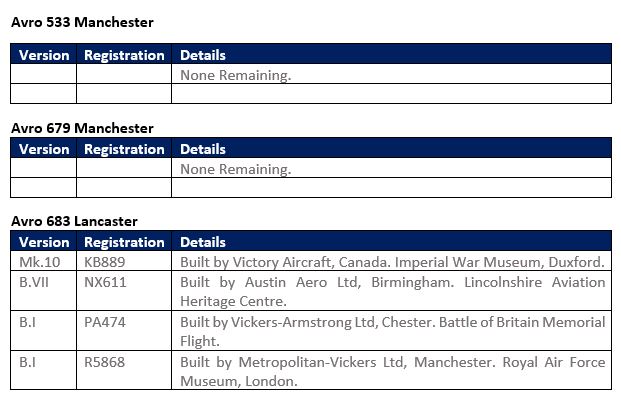



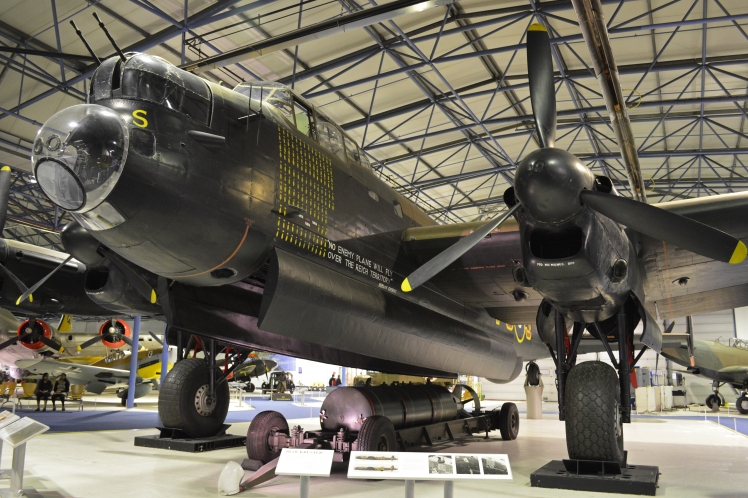

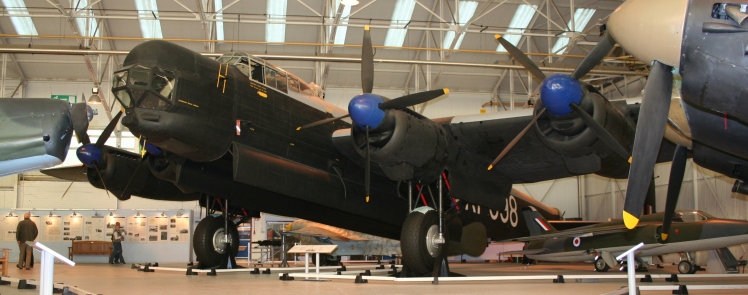

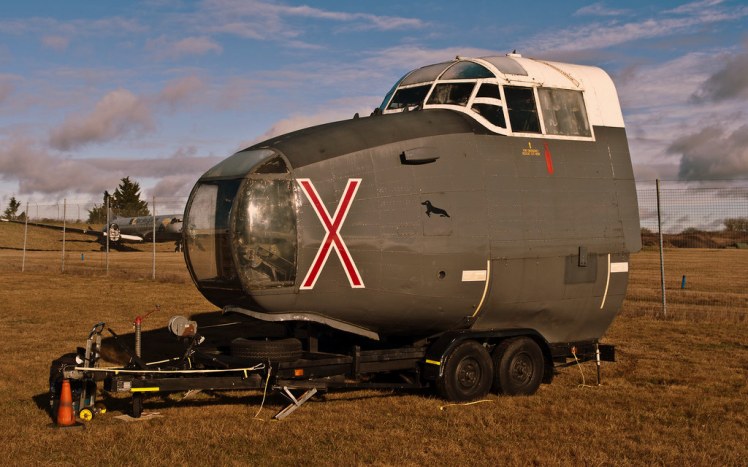






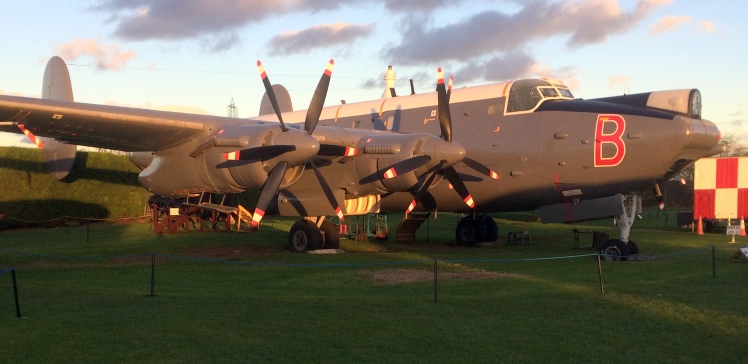


Versions:

References:
Avro Designations
https://www.secretprojects.co.uk/forum/index.php?topic=1500.5;wap
My Rolls-Royce Merlin Blog
https://pleszak.blog/2019/01/20/rolls-royce-derby-birthplace-of-the-merlin/
Avro Lancaster Production
https://www.youtube.com/watch?v=cLTP1U4Lz9k
Goodbye to the Lancaster
https://www.youtube.com/watch?v=KeyziPVcpjg
Shackleton as a bomber
https://www.youtube.com/watch?v=TODxJtR6UOE
Shooting down of a Lincoln
https://api.parliament.uk/historic-hansard/lords/1953/mar/17/shooting-down-of-british-bomber
https://weaponsandwarfare.com/2016/01/14/raf-lincoln-shot-down-by-soviet-mig-15/
BBC Shackleton documentary
https://www.youtube.com/watch?v=elENLa01XHA
Canadian Lancasters
https://www.bombercommandmuseum.ca/lanccanadian.html
Remaining Lancasters
https://en.wikipedia.org/wiki/List_of_surviving_Avro_Lancasters
Manchester catapult trials
https://forums.ubi.com/showthread.php/389553-Avro-s-Manchester-another-what-if
https://forum.keypublishing.com/forum/historic-aviation/138017-avro-manchester-catapult-trials
Test-bed Lancasters
http://www.lancaster-archive.com/lanc_photos_testbed.htm
Shackleton farewell visit to Woodford
https://www.youtube.com/watch?v=VWhtzwh_6tc
https://www.youtube.com/watch?v=lgaD5iVDwBQ
My other Dambuster / Lancaster related blogs:
Operation Chastise – The Dambusters a minute-by-minute account
https://pleszak.blog/2022/05/16/operation-chastise-the-dambusters/
THE HIGH PEAK DAMBUSTER
https://pleszak.blog/2022/02/12/the-high-peak-dambuster/
The day a Lincoln bombed a Lancaster, and a Meteor shot a Meteor shooting a Lincoln
https://pleszak.blog/2022/01/01/the-day-a-lincoln-bombed-a-lancaster-and-a-meteor-shot-a-meteor-shooting-a-lincoln/
Milk run over the Eder Dam
https://pleszak.blog/2020/07/13/milk-run-over-the-eder-dam/
Lancaster bombers operated by the Soviet Air Force in WW2
https://pleszak.blog/2019/12/05/lancaster-bombers-operated-by-the-russian-airforce-in-ww2/
What happened to the Lancasters used on the Dambuster Raid?
https://pleszak.blog/2019/08/20/what-happened-to-the-lancasters-used-on-the-dambuster-raid/
Testing and training for the Dambuster Raids – what’s left to see?
https://pleszak.blog/2018/06/13/testing-and-training-for-the-dambuster-raids-whats-left-to-see/
All the Dambuster Dams
https://pleszak.blog/2022/07/19/all-the-dambuster-dams/
Don’t forget those Lancasters that became civil aircraft as Lancastrians to be operated by British South American Airways (BSAA).
LikeLike
Thanks for the comment Karl. I did consider including those, the test bed Lancasters, and the Yorks but decided against it as the blog was too big already.
LikeLike
I can understand what you say, I’ve been struggling to write a piece on my personal view of aviation development in UK for the period of which I have some direct family expeience 1917 to 2013.
Among my bits and pieces of memorabilia I have BOAC photos of their fevelopment Lancastrian also Viking from post WW2. Whereas fom WW1 postcard pics from inside AirCo’s Hendon works, as well as their House mags.
Oddly enough I designed (but never tried to fly) aa delta wing model that predated release of Vulcan info but led to some questions at an interview for a job at RAE!
LikeLike